MP Board Solutions for Class 9 English Beehive Chapter 6 – My Childhood
MP Board Solutions for Class 9 English Chapter 6 – My Childhood are essential for understanding the early life of Dr. A.P.J. Abdul Kalam and the values he cherished, aligned with the MPBSE curriculum. These well-structured answers help students explore themes of discipline, religious harmony, and ambition. Designed as per the latest syllabus, these solutions strengthen value-based learning and comprehension. Ideal for revision and practice, they offer moral inspiration and exam-ready content for Class 9 English students.
MP Board Solutions For Class 9 English (Beehive) – My Childhood – Exercise Images
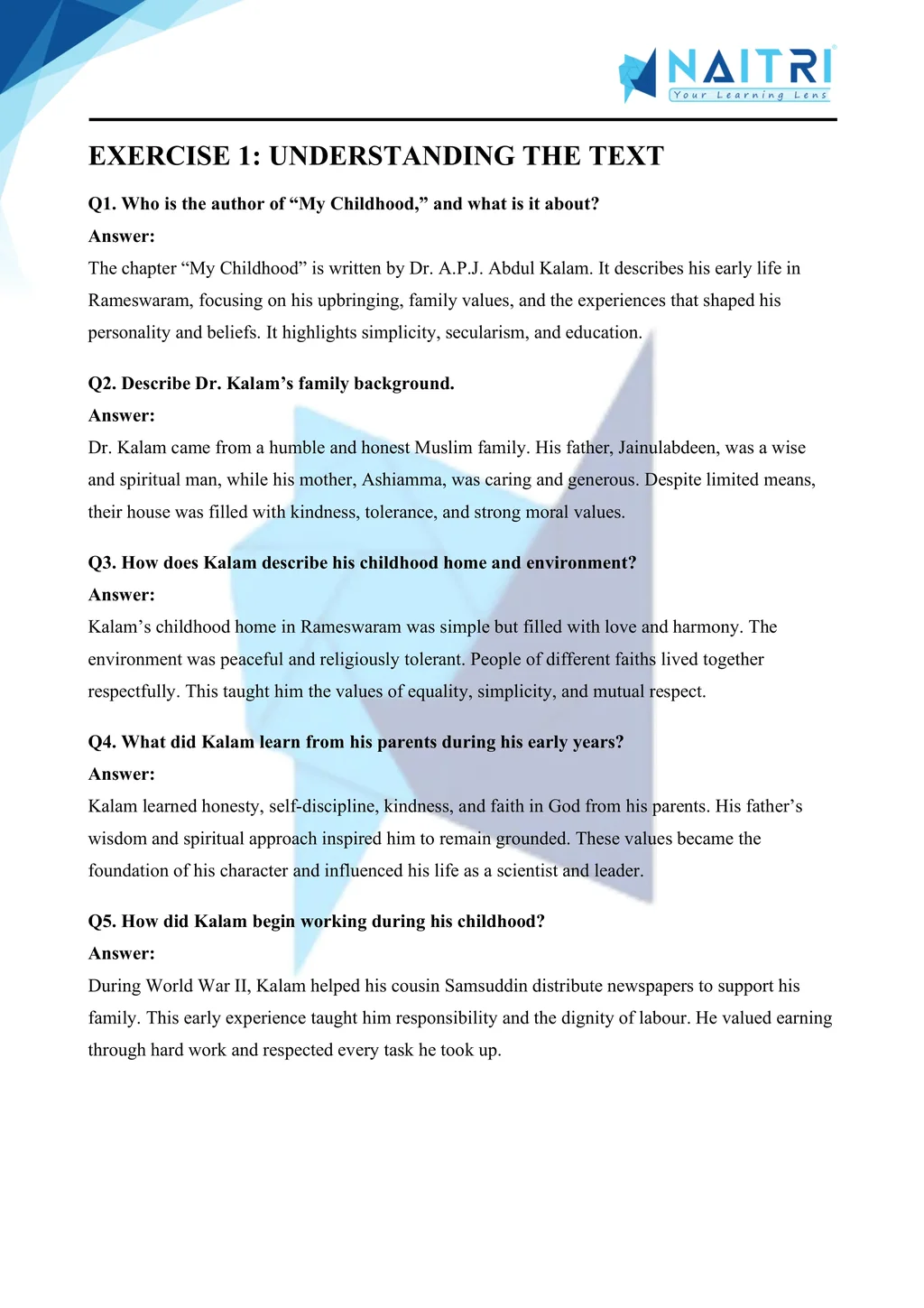
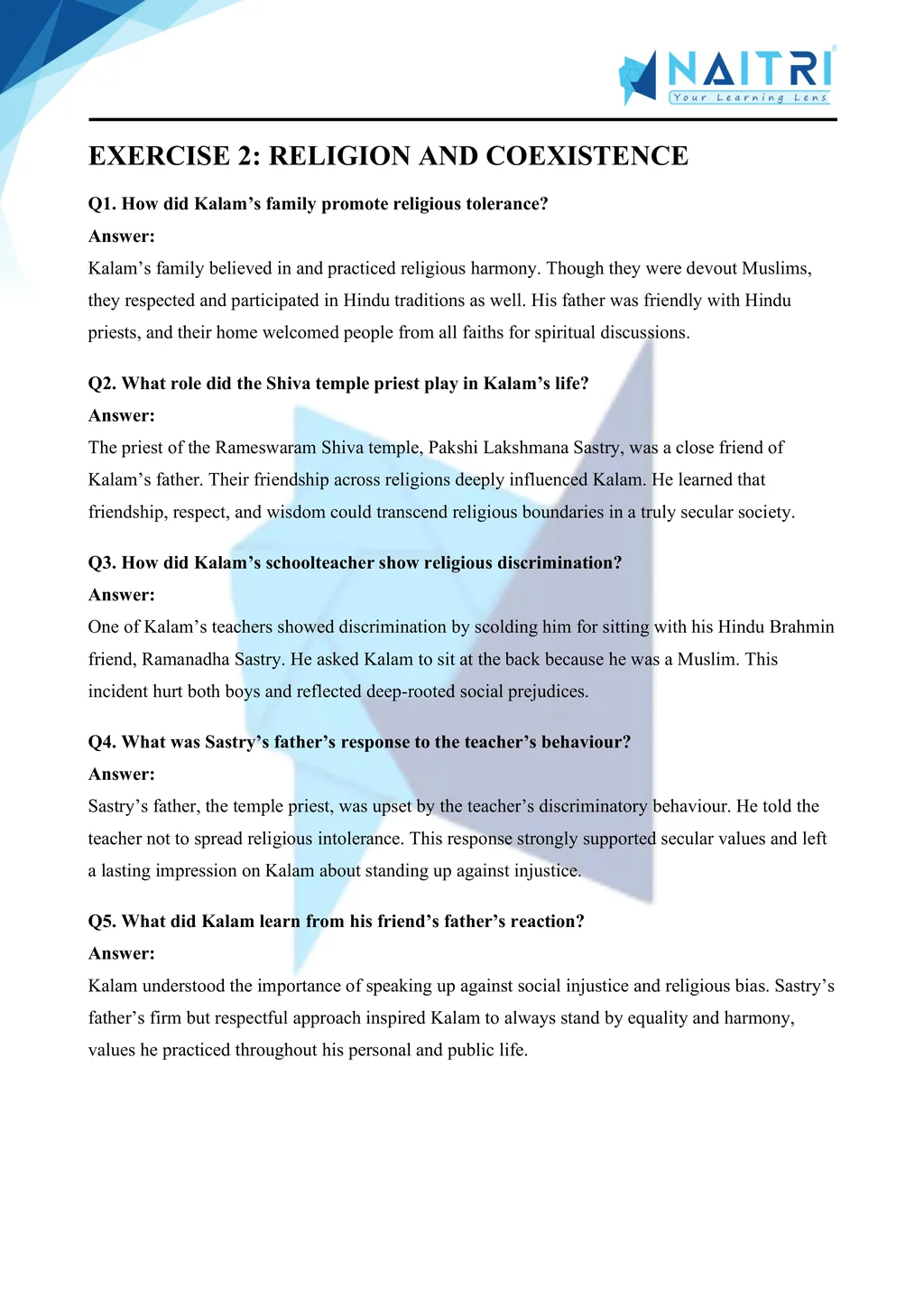
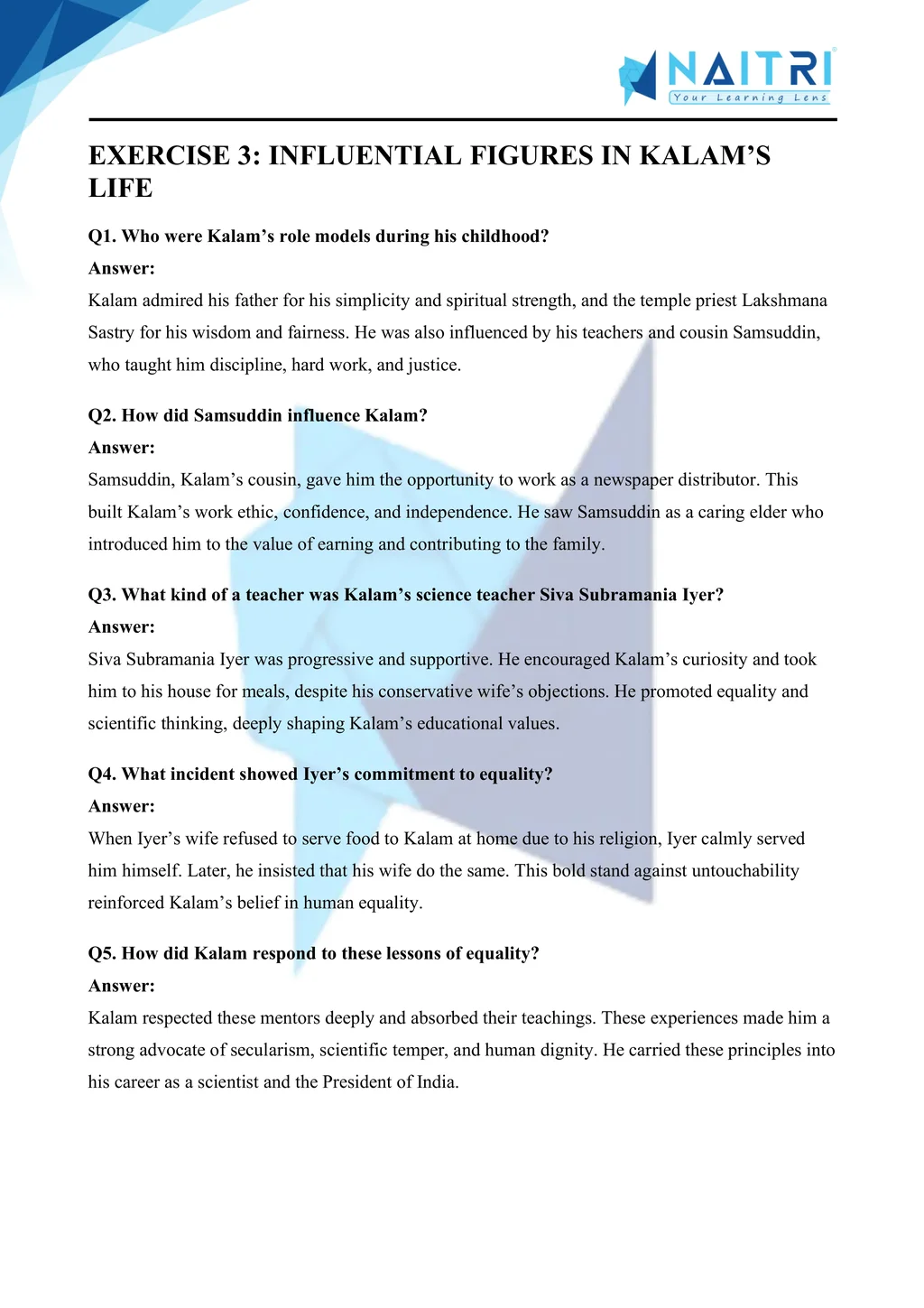
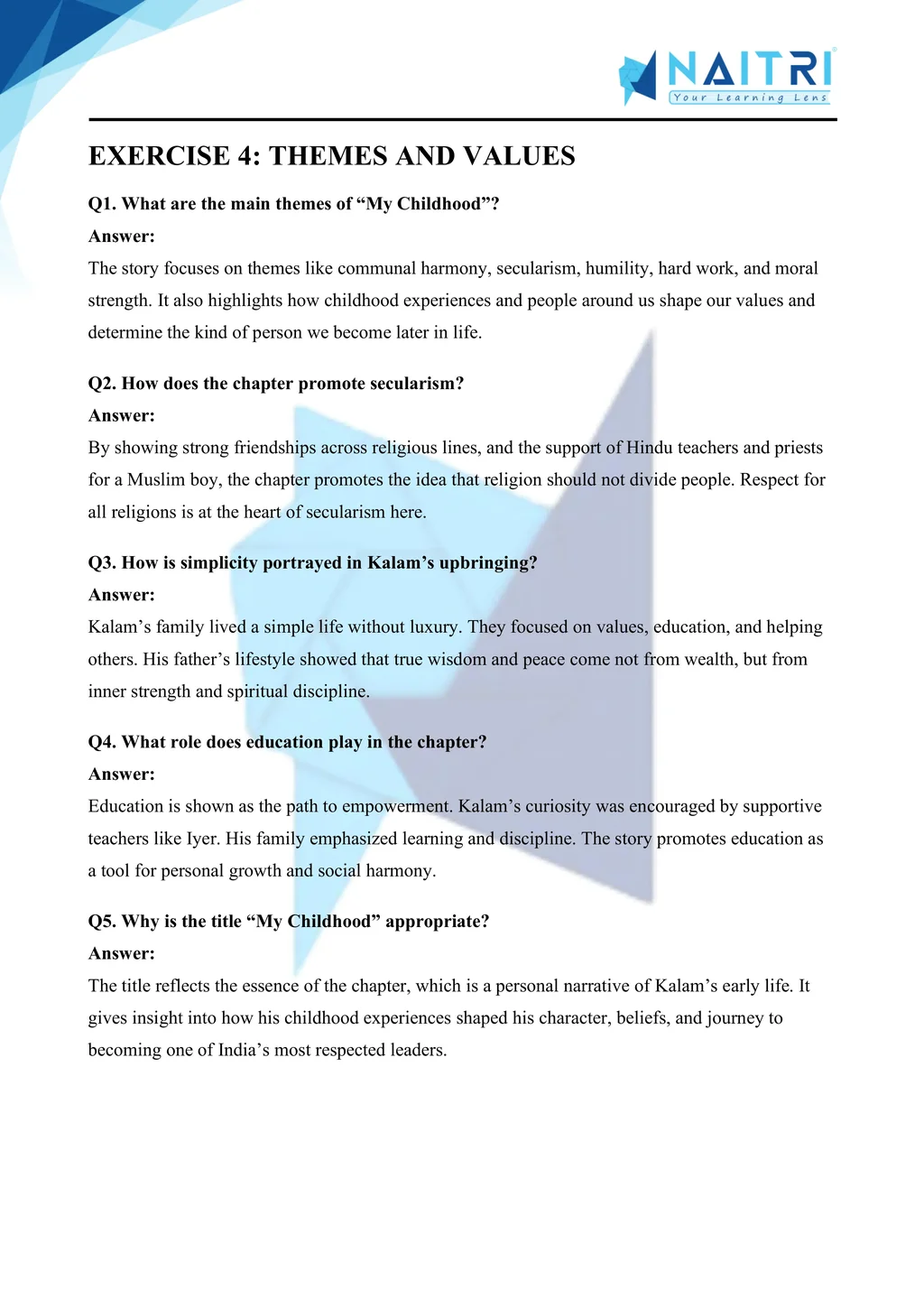
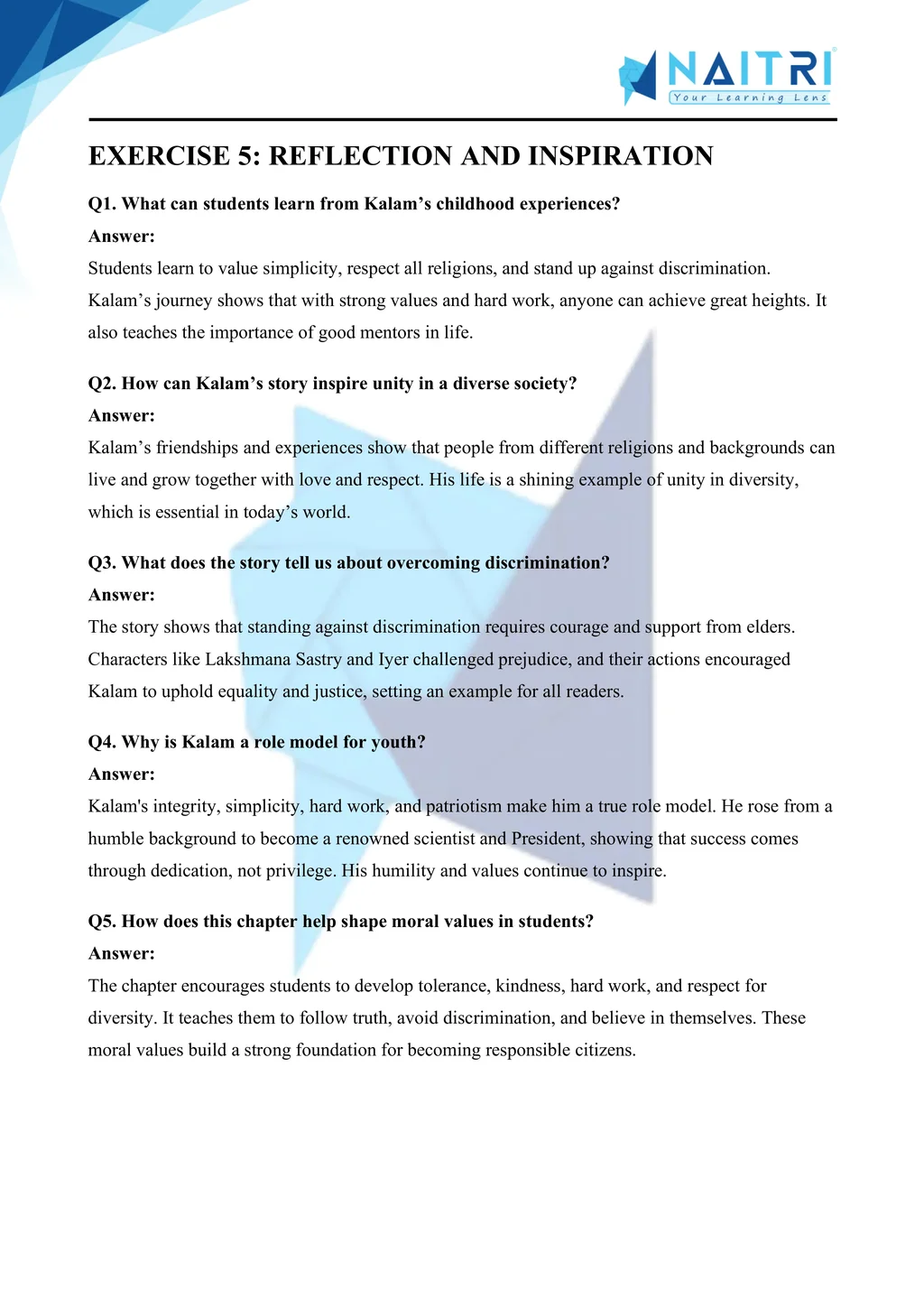
Experience English Like Never Before – With AR!
Understanding My Childhood is now more exciting and immersive! With the NAITRI App, you can explore engaging literature through Augmented Reality (AR). Explore Dr. Kalam’s early life, values form, and friendships shape future greatness — right in front of you. Our AR-powered lessons make learning interactive, 3D, and fun, helping you retain concepts better and enjoy every topic.



Visualize . Interact . Understand . The future of learning is here
My Childhood – Important Questions with Answers
Who is the author of the chapter “My Childhood”?
Answer: The chapter is written by Dr. A.P.J. Abdul Kalam, who was a renowned scientist and later became the President of India.Where did Abdul Kalam spend his childhood?
Answer: He spent his childhood in Rameswaram, a small town in Tamil Nadu, where he lived in a middle-class Muslim family.What was Kalam’s family background?
Answer: Kalam’s family was honest, generous, and spiritually inclined. His father was a religious man, and the family led a simple life.What values did Kalam learn from his parents?
Answer: He learned honesty, discipline, kindness, and respect for all religions from his parents, which deeply shaped his character and thinking.What kind of relationship did Kalam have with his parents?
Answer: Kalam had a loving and respectful relationship with his parents, especially his father, who was a man of great wisdom and simplicity.How did religion influence Kalam’s life?
Answer: Religion taught Kalam about spirituality and tolerance. His household respected Hindu and Muslim traditions, reflecting religious harmony in everyday life.Who was Kalam’s close friend?
Answer: His best friend was Ramanadha Sastry, a Hindu priest’s son, which shows how friendship transcended religious boundaries in his early life.What incident in school shocked young Kalam?
Answer: A teacher asked Kalam to sit separately from his Hindu friend because of religious differences, which deeply hurt both boys emotionally.How did Ramanadha Sastry’s father react to the discrimination?
Answer: He was very upset with the teacher’s behavior and reprimanded him, emphasizing the need for equality and communal harmony.How did Kalam react to the discrimination?
Answer: Though he was hurt, he did not develop hatred. Instead, it made him understand the importance of unity and equality in society.What was Kalam’s view on education?
Answer: Kalam believed education should promote open-mindedness, critical thinking, and moral values, not just academic success or rigid rules.Who was Sivasubramania Iyer?
Answer: He was Kalam’s science teacher, a liberal Hindu who believed in equality, and even invited Kalam to his home for a meal.How did Iyer’s wife react to Kalam’s visit?
Answer: She was shocked and hesitant at first because of religious bias, but later changed after seeing her husband’s progressive attitude.What lesson did Kalam learn from Iyer’s actions?
Answer: Kalam learned the power of breaking social barriers and the importance of leading by example to change people’s thinking.What does the chapter say about caste and religion?
Answer: The chapter highlights how caste and religious divisions can be overcome through friendship, education, and understanding.What kind of education did Kalam receive in childhood?
Answer: He received a balanced education that included science, moral values, and exposure to different religious teachings.Why did Kalam admire his father?
Answer: He admired his father’s spiritual strength, simplicity, and ability to remain calm and thoughtful even during tough times.How did Kalam earn money as a child?
Answer: He helped his cousin in distributing newspapers during wartime, which taught him the value of hard work and responsibility.What does the story tell us about early influences?
Answer: It shows that early experiences and people in our lives can deeply shape our values, character, and future aspirations.What was Kalam’s dream as a child?
Answer: From an early age, Kalam dreamt of becoming a fighter pilot or aeronautical engineer, inspired by science and flying machines.How did Kalam’s environment shape him?
Answer: Growing up in a multi-religious, culturally rich environment helped him develop tolerance, respect, and a scientific temper.What message does this chapter convey?
Answer: The chapter emphasizes communal harmony, humility, hard work, and how one’s upbringing and valuesshape their destiny.How did Kalam view the role of teachers?
Answer: Kalam believed teachers should be role models, guiding students not just in academics but also in morals and discipline.What was the turning point in Kalam’s childhood?
Answer: The incident with the school teacher and the support from Sastry’s father made him more aware of social injustice.Summarize the essence of the chapter.
Answer: The chapter highlights how Kalam’s childhood was shaped by simplicity, secular values, and people who instilled in him integrity and tolerance.
My Childhood is an autobiographical account by Dr. A.P.J. Abdul Kalam, reflecting on his early life in Rameswaram. It highlights his upbringing in a modest but loving environment, values of religious harmony, and the influence of teachers and family. The story inspires students to stay grounded, dream big, and work hard.
Download Naitri App
Easy, Visual Learning — Right on Your Phone
Learn with Augmented Reality! The Naitri app makes CBSE and MP Board concepts interactive and fun — even in low-resource settings. Watch lessons, complete homework, take tests, and track progress — all in one place. Anytime. Anywhere.
Available on








